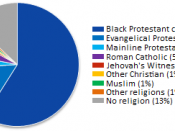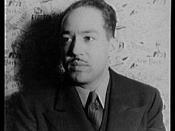The Harlem Renaissance Period (1919-1940) was an explosion of African-American social thought that was expressed through the visual arts, as well as through music, literature, theater and dance. Centered in the Harlem district of New York City, the New Negro Movement (as it was called at the time) had a profound influence across the United States and even around the world. The intellectual and social freedom of the era attracted many Black Americans from the rural south to the industrial centers of the north - and especially to New York City. There was a variety of publications by African Americans which brought about a new sense of purpose, confidence, and achievement unusual to many black artists due to their troubled history. This led to the impulse to create boldly expressive art of high quality. The 1920's saw the first significant amount of publishing of works by black artists since the turn of the century.
Migration to the north seemed a necessity due to the more and more intolerable hiring conditions for blacks in the south. Industrial expansion and jobs left open by whites now serving in WWI saw many blacks moving into the seriously overbuilt Harlem which was originally built for middle-class and upper-middle-class whites. It was soon labeled the "Negro capital of the world. During this period of migration, several magazines and newspapers strived toward a kind of "coming of age" for the black culture.
The early 1920's also saw a breakthrough for African Americans on the stage by finally having plays that showed the complex humanity of blacks. The essence of the renaissance to most of the younger artists was freedom -- freedom to create original, personal expressions of art, without regard to politics. There was much growth and change throughout the 1920's which led to a decisive...


